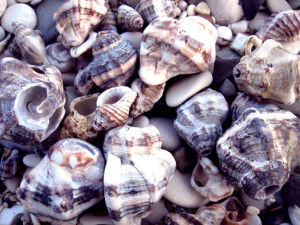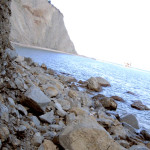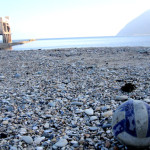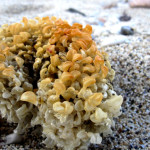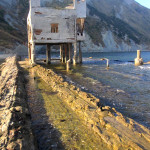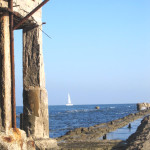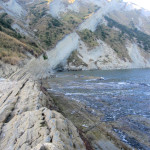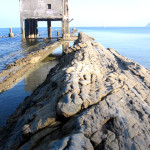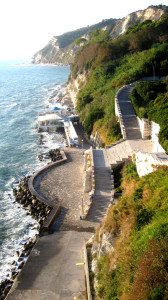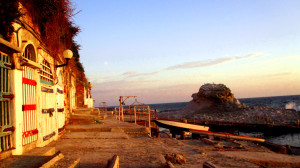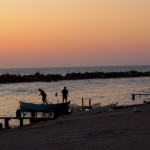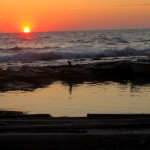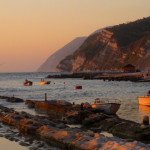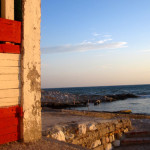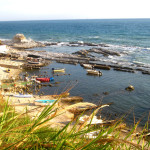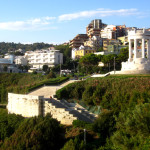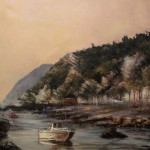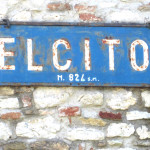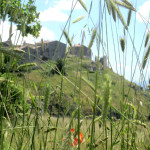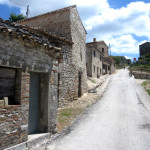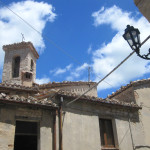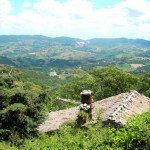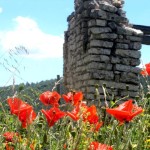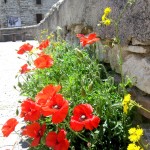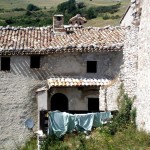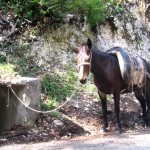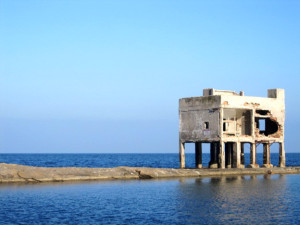 Between Ancona and Portonovo are about 12 kilometers of jagged shoreline. And while Bus 94 will take you from the city center of Ancona to the heart of Portonovo in a few minutes, the 12 kilometers of Via del Conero can also be covered by foot (though it is not generally recommended, as there is no sidewalk along the country road- and forbidden at night, as there are no street lamps either). About a kilometer north of Portonovo, you will find a hiking trail (“Sentiero del Trave”) stemming left from the main road, which will take you through a couple of fields and down a steep hill onto Spiaggia di Mezzavalle. This spiaggia libera can likewise be reached from Portonovo, although tides usually require wading through some shallow water before reaching the higher elevation of the beach.
Between Ancona and Portonovo are about 12 kilometers of jagged shoreline. And while Bus 94 will take you from the city center of Ancona to the heart of Portonovo in a few minutes, the 12 kilometers of Via del Conero can also be covered by foot (though it is not generally recommended, as there is no sidewalk along the country road- and forbidden at night, as there are no street lamps either). About a kilometer north of Portonovo, you will find a hiking trail (“Sentiero del Trave”) stemming left from the main road, which will take you through a couple of fields and down a steep hill onto Spiaggia di Mezzavalle. This spiaggia libera can likewise be reached from Portonovo, although tides usually require wading through some shallow water before reaching the higher elevation of the beach.
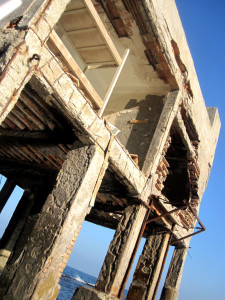 Regardless of arrival method, the beach boasts natural, untouched surfaces and a geographic phenomenon called Il Trave. Extending out of a cliff, this strand of rock reaches about a kilometer into the sea, skimming the surface of the water nearer to the beach before trailing off into the depths. On top of this carved rock is an old, abandoned house called “Casotto Fattorini”. Before years of destruction from the elements, this cement building used as one of the two fishing houses. Today, it serves as the iconic silhouette of Il Trave, still standing after so many years, even if its condition is not quite at the same level.
Regardless of arrival method, the beach boasts natural, untouched surfaces and a geographic phenomenon called Il Trave. Extending out of a cliff, this strand of rock reaches about a kilometer into the sea, skimming the surface of the water nearer to the beach before trailing off into the depths. On top of this carved rock is an old, abandoned house called “Casotto Fattorini”. Before years of destruction from the elements, this cement building used as one of the two fishing houses. Today, it serves as the iconic silhouette of Il Trave, still standing after so many years, even if its condition is not quite at the same level.
As on most of the rock formations in the Riviera del Conero, Il Trave is coated with a layer of mussels (moscioli, in the dialect of Ancona), the catching of which is strictly forbidden and regulated. The freedom of the mussels to grow naturally and without disruption of their environment is important to Portonovo, a sea post recognized globally for its seafood cuisine.
The beach around Il Trave is a treasure chest; thousands of shells and unusual pebbles take the place of sand, and various sea life gets washed ashore. Among volleyballs, glassy stones, and single shoes, you never know what you’re going to stumble across.

